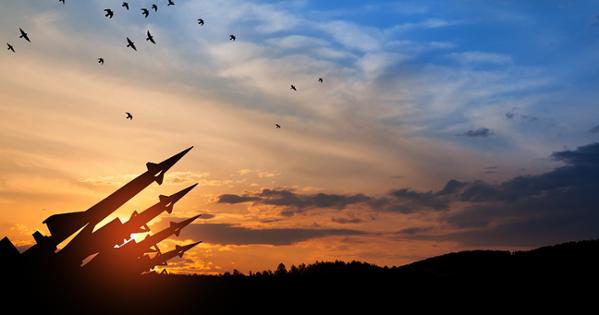Nuclear Weapons and the Israel-Iran Conflict

Earlier this month, a quickly escalating armed conflict between Israel and Iran deepened. The latest conflict started when Israel launched an attack on Iran’s nuclear and military sites in the early hours of June 13. In response, Iran shot back with aerial attacks targeting Israel, which primarily hit Tel Aviv.
The United States became involved in the conflict when it targeted Iran’s nuclear infrastructure on June 22 using “bunker buster” bombs with the goal of destroying Iran’s nuclear enrichment capacity. President Donald Trump applauded the strikes as a success; however, a preliminary US intelligence assessment of the damage caused by the strikes was “inconclusive” as of Wednesday, June 25. Since the US strikes, Israel and Iran have agreed to a tenuous ceasefire deal that appeared to be holding as of the publishing of this piece.
With rapid shifts in the conflict and many headlines about the status of Iran’s nuclear program, we asked SIS professor and nuclear weapons expert Sharon Weiner a few questions about the history of Iran’s nuclear program and what the US can do to reduce the threat of global catastrophe.
- The United States’ history of involvement with Iran’s nuclear program goes back to 1957. The program continued to receive support from the US until the Islamic Revolution in 1979. In 2015, President Barack Obama’s administration signed a historic nuclear deal with Iran, which President Donald Trump withdrew from in 2018 during his first term. Since then, can you get us up to speed on the status of Iran’s Nuclear Program and explain the long-term impacts of the US withdrawing from the Iran nuclear deal?
- The US intelligence community has consistently reaffirmed what Iran says itself: it does not have a nuclear weapons program. The Joint Comprehensive Plan of Action (“the Iran deal”) was intended to allow Iran to continue to enrich uranium for peaceful purposes but to monitor that process to help ensure the program remains peaceful. It’s important to remember that under the Nuclear Non-Proliferation Treaty (NPT), all signatories are allowed peaceful uses of nuclear processes.
- Iran has largely continued to abide by the terms of the Iran deal, even though the US withdrew. But with no deal, Iran’s ability to enrich uranium is less restricted. Although this enriched uranium has a variety of peaceful uses—nuclear energy fuel, medical research, etc.—if the material is enriched more and in sufficient quantities, if Iran chose to do so, it could then build nuclear weapons.
- On June 22, the United States launched “Operation Midnight Hammer” targeting Iran’s nuclear infrastructure in Fordo, Natanz, and Isfahan. President Trump described the strikes as a “spectacular military success.” What are the long-term implications of this attack? What does it mean for the future of Iran’s nuclear program?
- The same day that Trump and Hegseth declared the destruction of Iran’s nuclear program, the US intelligence community and Pentagon sources declared the opposite. Given that key Iranian facilities are buried deeply underground, it is extremely unlikely that they were destroyed. Moreover, there may be duplicate facilities, or Iran may have already moved its stockpiles of enriched uranium as some news outlets have reported. The attacks targeted a country for doing what it is allowed to do under the NPT: peaceful uses of nuclear materials. Given that the US used military action against Iraq and Libya for their suspected nuclear weapons programs but not North Korea or Israel—both of whom have nuclear weapons and are not part of the NPT—Iran may well conclude that its best guarantee of security is not the NPT but rather its own nuclear weapons.
- In recent days, Iran’s parliament has introduced a bill that threatens a withdrawal from the Nuclear Non-Proliferation Treaty (NPT). If the country moves forward with this threat, what could be the fallout from this decision?
- Iran is signaling yet again that it would prefer not to develop nuclear weapons but will do so if forced. It’s interesting that rather than simply ignore the NPT and develop those weapons, Iran says it will withdraw from the NPT. This indicates at least some regard for international treaties and norms. But if Iran withdraws and tries to develop nuclear weapons, I suspect that Israel will once again attack in an effort to make sure that the only nuclear arsenal in the Middle East is Israel’s.
- The Bulletin of the Atomic Scientists announced in January of this year that we are now 89 seconds to midnight on the Doomsday Clock. Given the events of the past few weeks, what role can the US play in reducing the threat of global catastrophe?
- The tendency is to focus on nuclear weapons issues when international tensions are high. But in reality, nuclear weapons are always a danger. Their use, due to misperception, miscalculation, or maybe even just an attempt to “be tough” can easily lead to a chain of events that would impact all humans. Instead, the United States could assert global leadership to further reduce nuclear stockpiles and seek alternative means of providing us with security. Given emerging technologies, the US nuclear arsenal, and especially its intercontinental ballistic missiles (ICBMs), are increasingly vulnerable to destruction by precision-guided conventional weapons. Why not take advantage of this opportunity and eliminate at least these weapons in favor of a more durable and less risky means of national security?